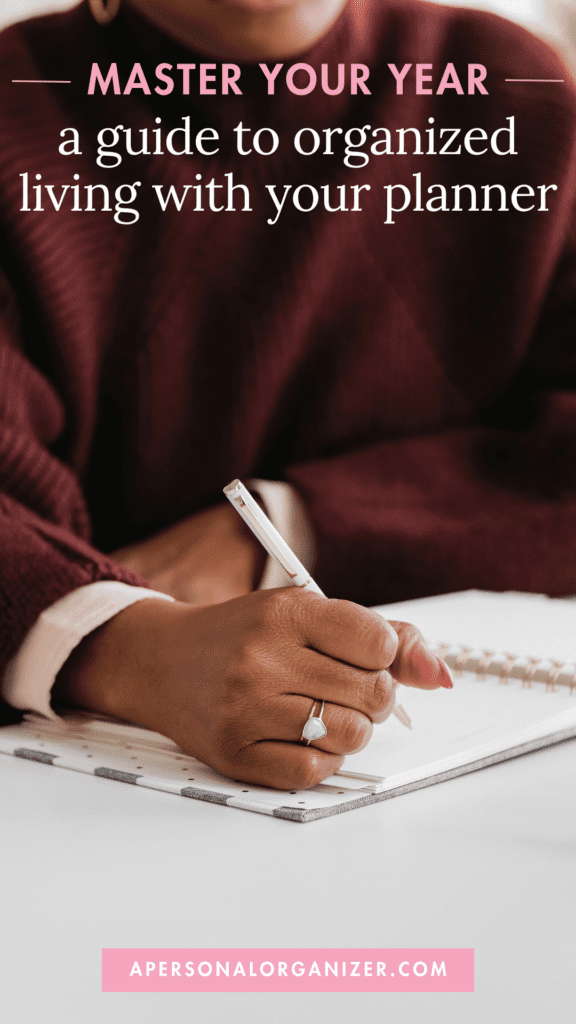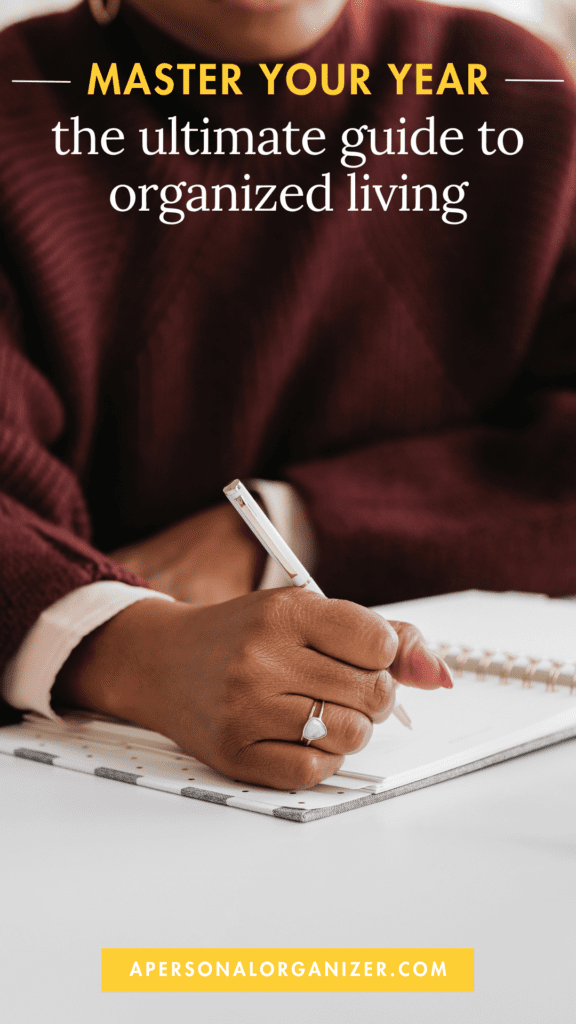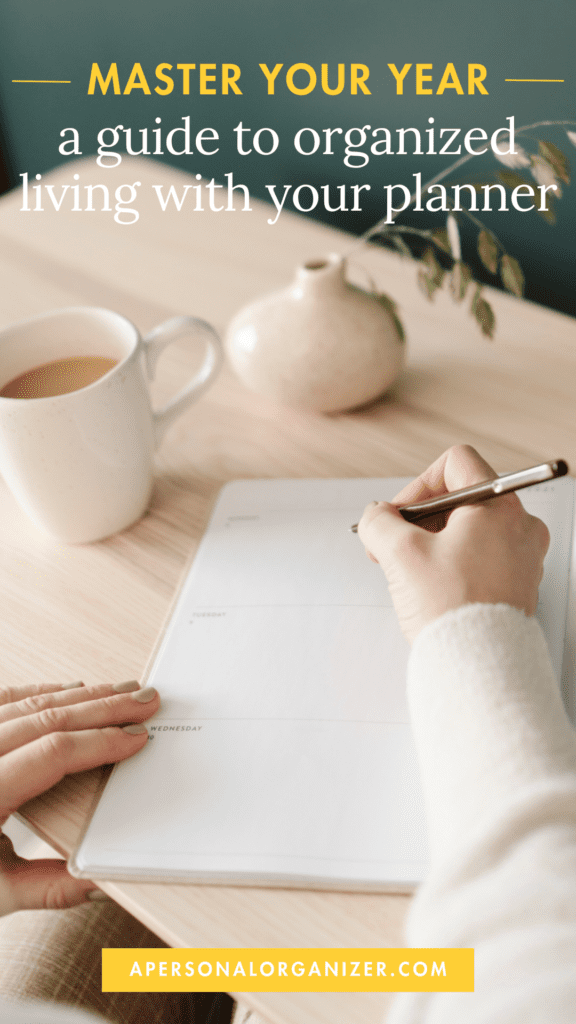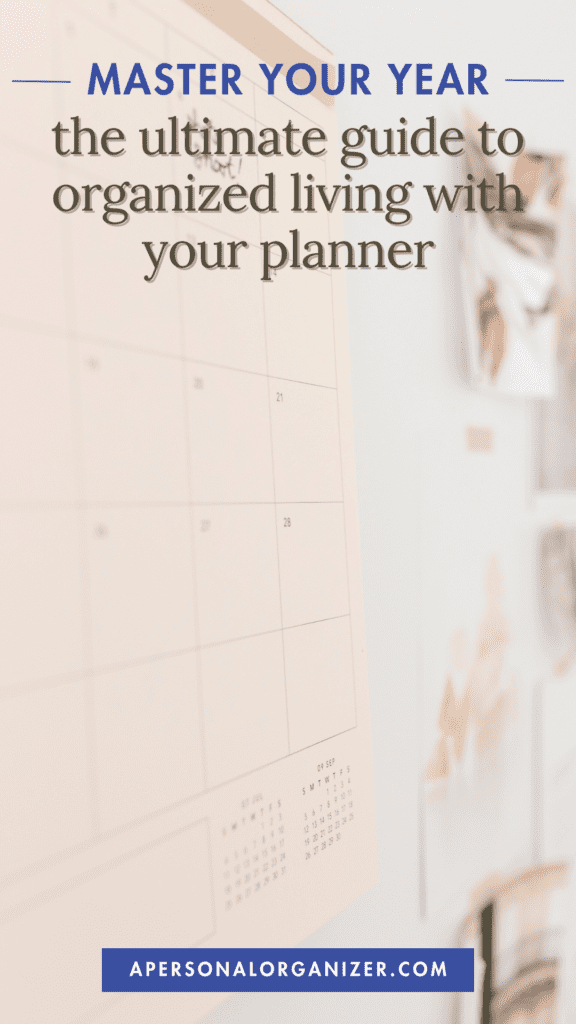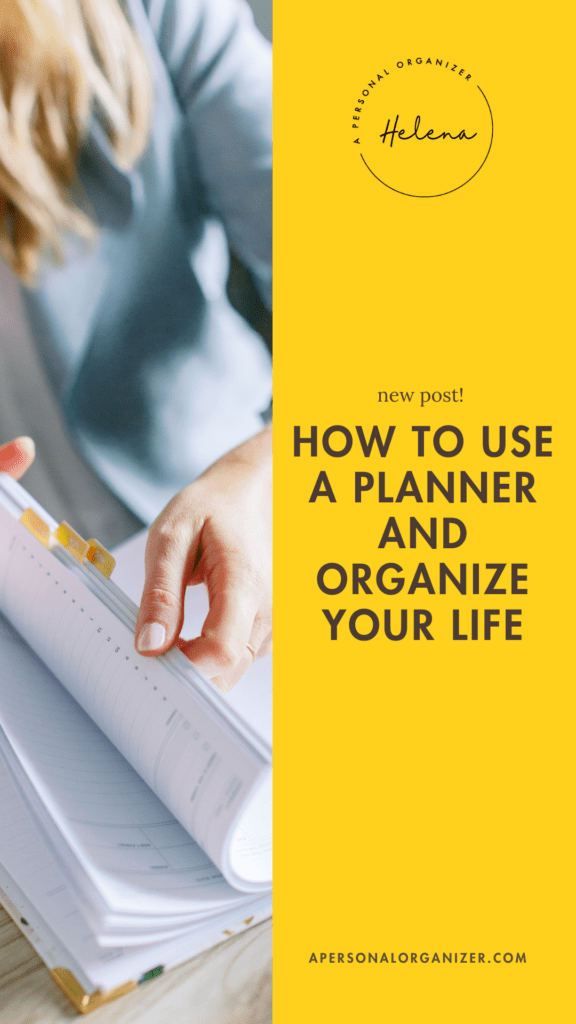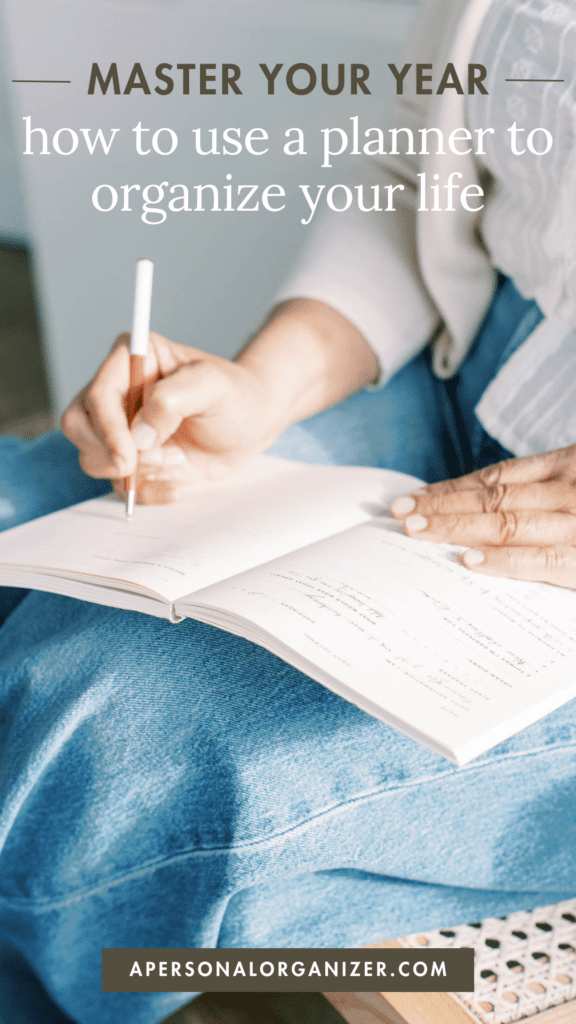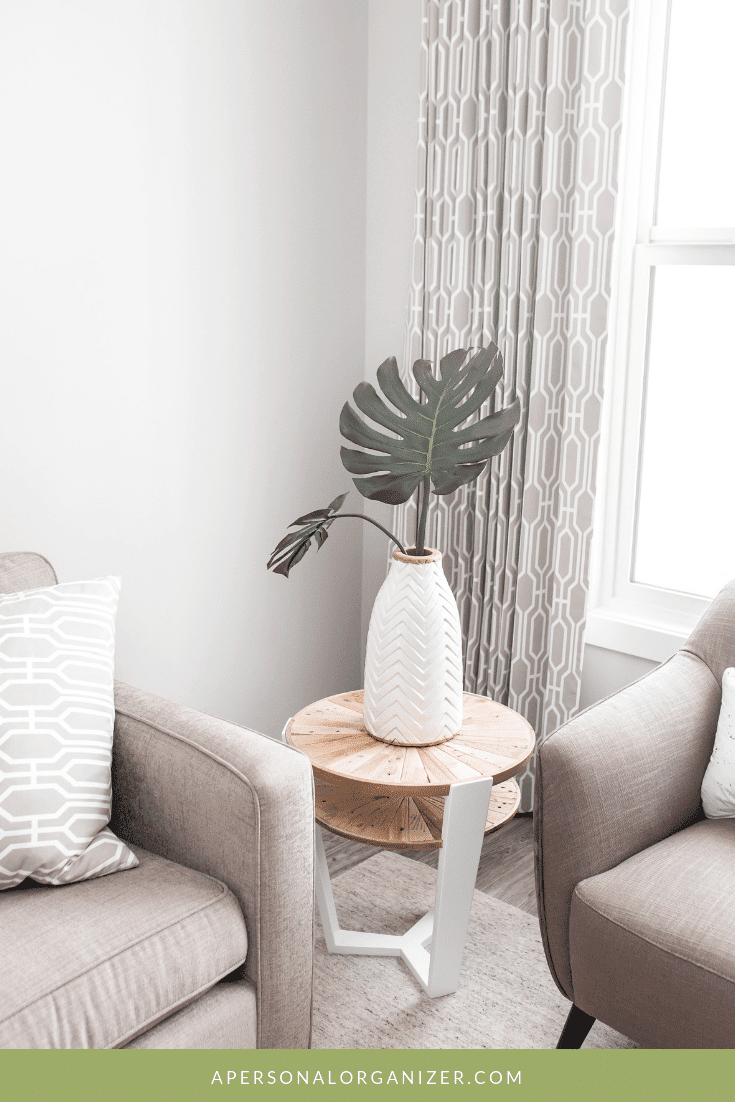This post may contain affiliate links for your convenience. If you click on the link and purchase the item, A Personal Organizer, LLC. may receive a small commission at no extra cost. All opinions remain our own. As an AmazonAssociate, A Personal Organizer, LLC earns from qualifying purchases.
Streamlining Your Planner for a Stress-Free Year
Have you ever felt like there are just not enough hours in a day to get everything done? Well, I have good news for you! A well-organized planner isn’t just a boring tool; it’s your ultimate ally in navigating the complexities of daily life. With a good personal planner, you can stay on top of your game, plan your days efficiently, and feel like a superhero who can conquer anything that comes your way!
Embarking on a yearly planning journey is a game-changer for maintaining sanity amidst life’s hustle. In this guide, I’ll break down the process I follow every year into actionable steps to make sure that your planner becomes the ultimate tool for organized living. Let’s dive in!
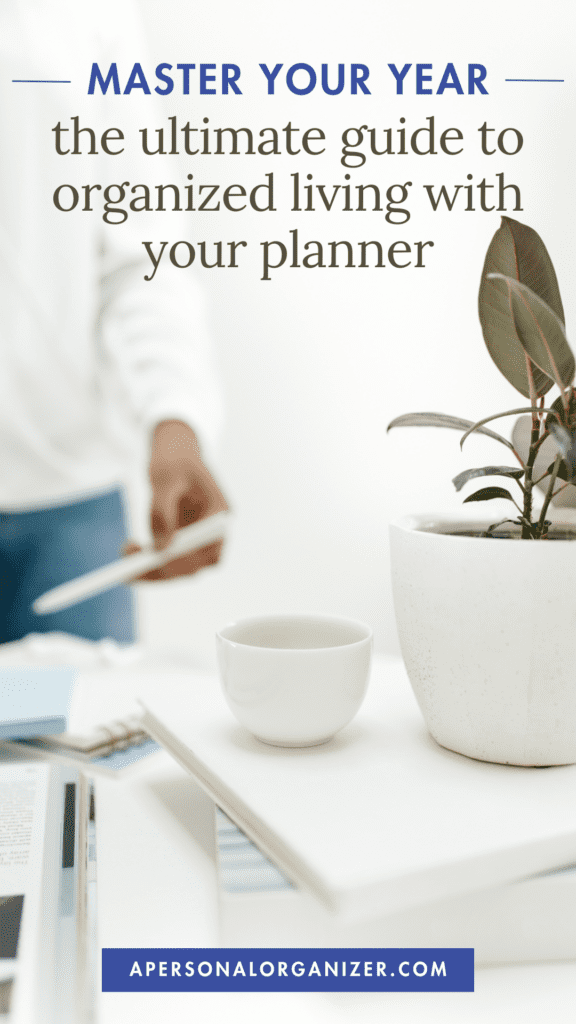
1. Understand Why Using Your Planner is a Good Thing
Call me stubborn, but I have difficulty sticking to ideas I don’t see a good reason to adhere to. However, once I understand the reasoning and if they make sense to me, I’m all in. And that happened around planning my year instead of month-by-month or, worse, weekly.
I embraced the process once I understood I was giving myself a broader horizon to plan for the fun stuff.
First, understand that there are Fixed and Variable Commitments that will always show up in our lives.
There are fixed commitments in our lives; they happen every year on set dates, such as birthdays and anniversaries. Others will happen when you schedule them, like yearly medical and dental visits, and then you have those planned by third parties, such as weddings or school vacations.
By placing all these dates on your planner, you can plan for the time and resources you will need for each of them and see the “gaps” available to you and your family to do the fun things you love.
2. Assemble Your Essentials To Organize Your Planner
You can create a nice space for this yearly ritual with music, candle lighting, and your favorite drink. To kick off your planning session, let’s gather the supplies and information you’ll need:
Supplies:
- Your cellphone – you’ll need numbers + make calls
- Your Personal Planner
- Your favorite pen/pencil and colored pencils
- Stickers, page markers, flags
Personal Information:
- Birthdays & Anniversaries
- Dentists’ phone numbers – annual check-ups
- Doctor phone numbers – annual check-ups, school physicals, vaccinations
- Flyers for camps and activities you’ve signed up for or plan to
- Personal Trips
- Pet Appointments – annual check-ups, vaccinations, grooming
- Primary Care Physician, GYN, Pediatrician, Dentists phone numbers
- Self-Care Appointments – haircut, hair color, facials, nails (add your regular services)
- Time Off Work
- Workouts
Family and Social:
- Academic/School calendar for each child
- School Schedules – Here is what I pay attention to:
- Early-pick-up
- Late-arrivals
- Admin day/ Teacher workday when school is off
- School breaks and vacations
- Parent-teacher week (pencil it down as you’ll have a date and time later)
- If you have a kid headed to college, research all critical deadlines!
- Date Nights
- Family Commitments
- Holidays – National and religious
- Church
- Club Events
- Social Activities
- Spouse’s Schedule
- Sports – check the calendar for each sport your children sign up to. Insert date and time for games, practice hours, etc.
- Meal Plans
- Bill Due Dates
- Home services you hire regularly like cleaning, laundry, gardening, window and chandelier cleaning, gutter cleaning, furnace and AC maintenance, etc.
Work and Business:
- Business Travel + Meetings
- Partner’s work and/or study calendar with important dates
- Pay Day
- Work Schedule
General and Miscellaneous:
- Home + Car Services
I like to use a spacious “monthly view” planner that accommodates appointments, events, and deadlines.
Consider incorporating sections for appointments, a task list, and daily notes. Choose an electronic or paper format that aligns with your preferences and usage style.
3. Review and Align Schedules
Once armed with your essentials, sift through scattered notes and input all appointments, phone calls, and impending deadlines into your planner. If you share a household with a spouse, use a distinct color to note their schedule. This ensures seamless coordination for family-related commitments like dinners, kids’ pick-ups, or drop-offs.
Include all kids’ activities, classes, practice times, appointments, school exams, playdates, and parties. Differentiate categories with colors for a visual reference. By doing so, you’ll identify days with tight schedules, allowing for more flexible dinner plans.
Consider the time needed for homework, household chores, and designated family time. Integrate your household chores into your plan, allocating laundry and grocery shopping days.
Pro tip: Preparing meals in advance, like on Sundays, can be a lifesaver. Cook extra batches and freeze them for hassle-free dinners on busy days.
4. Craft Your Monthly Menu & Plan Your Shopping
This step is optional, but it will save you so much time and money and bring so much satisfaction that I highly recommend doing it now.
Compile a list of favorite recipes and the necessary ingredients. This provides peace of mind and yields a ready-made list of dinners for the upcoming weeks. Your grocery list is now conveniently sorted for those hungry tummies!
Next, see when the best days for grocery shopping will be according to your family schedule, cleaning day, or cleaning services if you hire them out.
5. Sync Your Planners
If you maintain a family planner in a communal space like the kitchen, transfer all major events marked in your personal planner to it. This synchronized approach ensures that everyone in the household is on the same page, offering a quick reference point during phone calls or multitasking moments in the kitchen.
6. Next Steps
- Keep all family information centralized.
- Set a time weekly to review and update.
- Update everything as it comes or at your scheduled time.
Following these steps makes your monthly planning routine a breeze, offering clarity and structure to your days. A well-organized planner isn’t just a tool; it’s your ally in navigating the complexities of daily life.
Organizing Planners
Home Management Binder
Kick overwhelm to the curb with all the checklists and forms you need to organize your home, family, and time. Create routines that are unique to your family’s needs and schedules.



